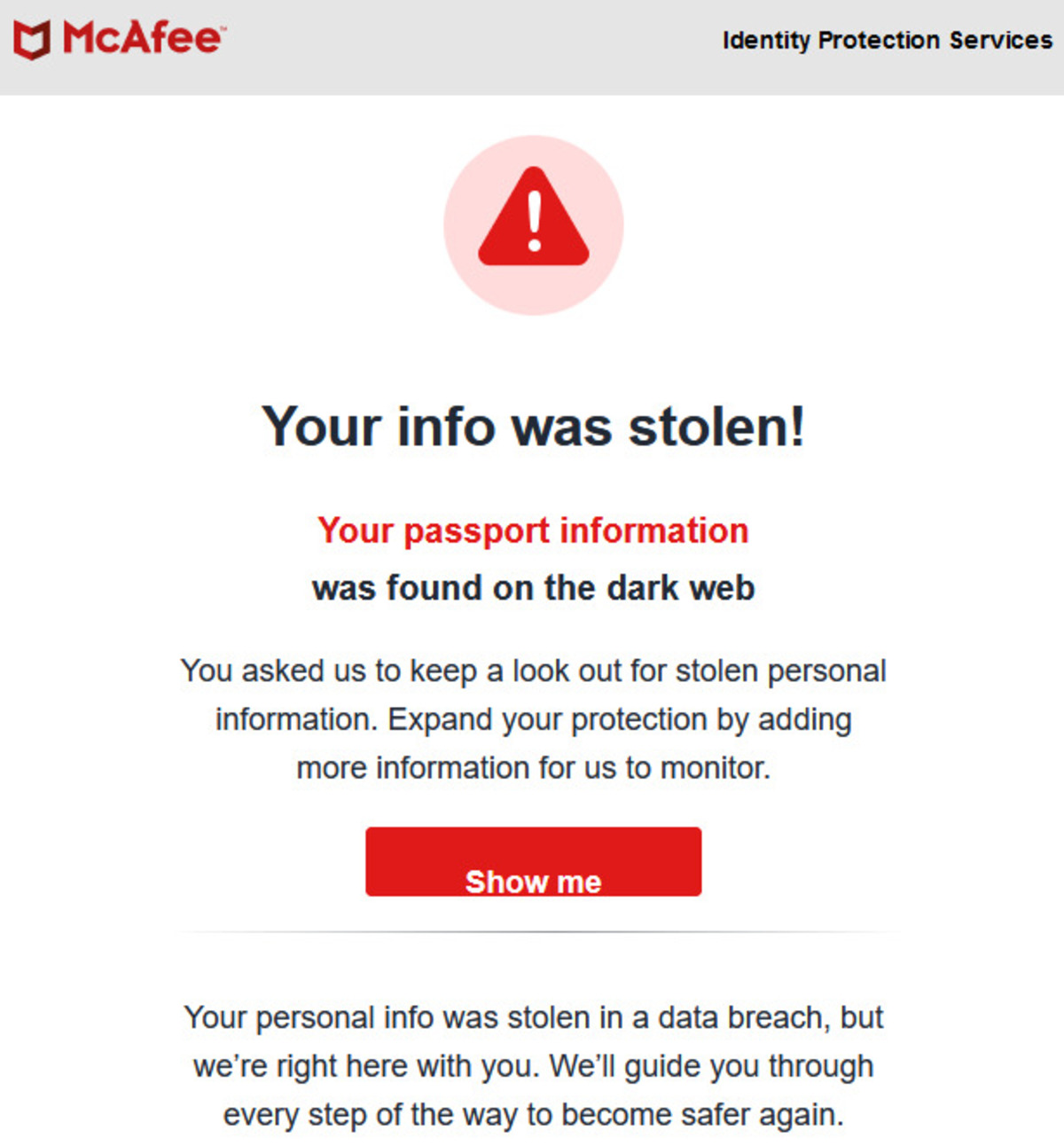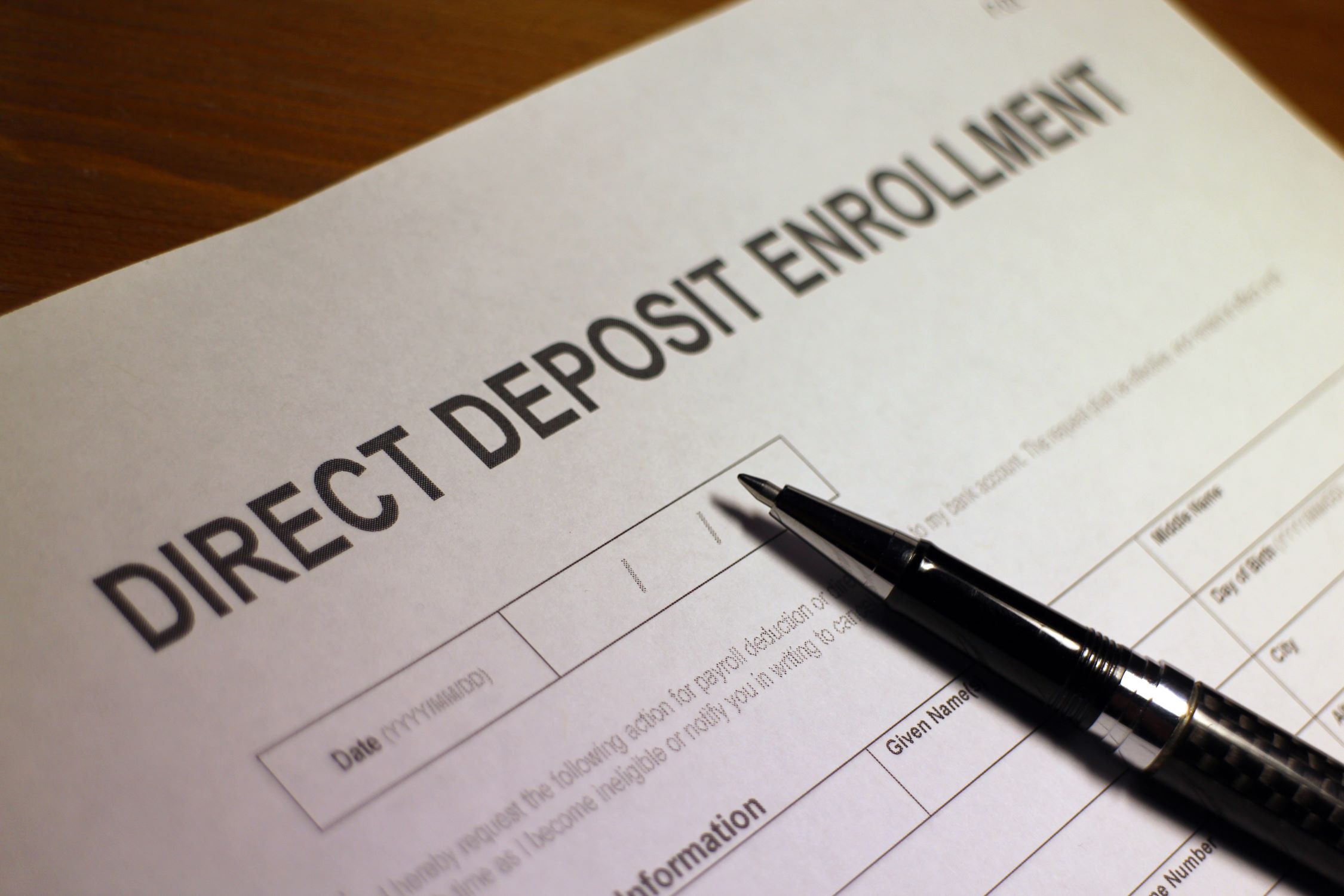Introduction
Updating your banking information with the Social Security Administration is crucial to ensure the smooth receipt of your benefits and payments. Whether you’ve changed your bank or simply need to update your account details, it’s essential to keep your financial information up to date with Social Security.
With the advances in technology, this process has become much more convenient and can be done online from the comfort of your own home. Gone are the days of waiting in long lines or filling out tedious paperwork. By following a few simple steps, you can quickly and easily update your banking information with Social Security.
In this guide, we will walk you through the process of changing your banking information with Social Security. From gathering the necessary information to verifying the changes, we will cover each step to ensure a smooth and hassle-free experience.
It’s important to note that updating your banking information with Social Security is not only important for receiving benefit payments but also to protect your personal and financial information. By ensuring your banking details are accurate and up to date, you can avoid any potential delays or issues in receiving your benefits.
So let’s get started and learn how to effectively update your banking information with Social Security.
Understanding the Importance of Updating Banking Info with Social Security
Keeping your banking information updated with the Social Security Administration is crucial for a number of reasons. First and foremost, it ensures that your benefit payments are sent to the correct bank account and are received in a timely manner.
One of the main advantages of updating your banking information is convenience. By having your benefits deposited directly into your bank account, you eliminate the need to visit a physical office and cash a check. Instead, the funds are automatically transferred, making it easier for you to access your money and pay bills promptly.
Moreover, updating your banking information with Social Security helps protect your personal and financial information. By ensuring that your bank account details are accurate and up to date, you minimize the risk of unauthorized access or fraud. This is especially important in today’s digital world, where cybercriminals are constantly looking for ways to exploit personal information.
Another important aspect is the potential for missed payments. If your banking information is not updated, your benefit payments may be sent to an old or closed account, resulting in a delay in receiving your funds. This can cause unnecessary stress and financial hardship, especially if you rely on these payments for your living expenses.
It’s also worth mentioning that updating your banking information is not a one-time process. It’s important to review and update your account details whenever there are changes in your banking situation, such as switching banks, opening a new account, or closing an old one. By maintaining accurate information with Social Security, you can ensure a seamless transition and uninterrupted receipt of your benefits.
In summary, updating your banking information with the Social Security Administration is essential for a smooth financial experience. It provides convenience, protects your personal information, minimizes the risk of missed payments, and ensures the timely receipt of your benefits. By taking the time to update your banking information, you can enjoy the peace of mind that comes with knowing your financial transactions are secure and efficient.
Step 1: Gathering the Necessary Information
Before you begin the process of updating your banking information with Social Security, it’s important to gather all the necessary information to ensure a smooth and efficient update. Having the required information at hand will save you time and prevent any delays or errors during the process.
The first piece of information you’ll need is your Social Security number. This nine-digit number is unique to you and serves as your identification with Social Security. It is essential for accessing your account and making any changes to your personal information.
In addition to your Social Security number, you’ll also need your current bank account information. This includes the bank’s name, the exact account number, and the bank’s routing number. The routing number is a nine-digit code specific to your bank and is required to identify the financial institution for the transfer of funds.
To locate your account and routing numbers, you can refer to your checks or contact your bank directly. Most banking platforms also provide these details within your account settings or online banking portal.
Once you have your Social Security number and banking information, it’s also recommended to have a valid email address on hand. This is important as Social Security may send you notifications and updates regarding your account via email. If you don’t have an email address, you can easily create one through various free email service providers.
Lastly, it’s always a good idea to have some form of identification document available, such as your driver’s license or passport. While this may not be required for updating your banking information online, it’s always better to be prepared in case any additional verification is needed.
By gathering all the necessary information beforehand, you’ll be ready to proceed to the next step with ease. It’s important to ensure the accuracy of the information you provide, as any mistakes could lead to delays or errors in updating your banking information with Social Security.
Step 2: Logging into Your Social Security Account
Once you have gathered all the necessary information, the next step in updating your banking information with Social Security is to log into your Social Security account. This can be done easily and securely through the official Social Security Administration website.
To log into your account, visit the SSA’s official website and locate the “Sign In” or “My Social Security” option. Clicking on this will take you to the login page where you will need to enter your username and password.
If you don’t already have an account, you will need to create one. Simply select the “Sign Up” or “Create Account” option and follow the provided instructions. You will be asked to provide personal information to verify your identity, create a username and password, and set up additional security measures.
Once you have successfully logged into your Social Security account, you will have access to a range of services and features. This includes the ability to update your personal information, manage your benefits, and, of course, change your banking information.
It’s important to note that the Social Security Administration takes the security of your information seriously. They employ robust security measures to protect your sensitive data. However, it’s still advisable to keep your login credentials secure and avoid using public or unsecured networks when accessing your account.
If you encounter any issues while logging into your account, such as forgotten passwords or username, you can follow the provided prompts on the login page to recover or reset your credentials. Should you experience any technical difficulties, you can contact the Social Security Administration for assistance.
By successfully logging into your Social Security account, you are now ready to move on to the next step of updating your banking information.
Step 3: Navigating to the My Profile Section
After logging into your Social Security account, the next step in updating your banking information is navigating to the “My Profile” section. This is where you can make changes and update your personal details, including your banking information.
To access the My Profile section, look for a navigation menu or sidebar on your account dashboard. The exact location may vary slightly depending on the layout of the website, but typically, you will find it labeled as “My Profile,” “Account Settings,” or something similar.
Once you’ve located the appropriate section, click on it to access your profile information. This section will allow you to view and update various details such as your contact information, mailing address, and, most importantly, your banking information.
It’s important to pay attention to any specific instructions or guidelines provided by Social Security when updating your banking information. They may require certain formatting for the account and routing numbers, or may have specific security measures in place to protect your financial data.
Keep in mind that Social Security takes the security of your information seriously. You may be asked to verify your identity through additional security measures such as providing answers to security questions or entering a unique code sent to your registered email address or phone number.
Once you have accessed the My Profile section, locate the option for updating your banking information. It may be labeled as “Update Bank Information,” “Add or Change Direct Deposit,” or something similar. Click on this option to proceed with updating your banking details.
By successfully navigating to the My Profile section and finding the option to update your banking information, you are one step closer to completing the process of changing your banking details with Social Security. The next step will involve actually entering and updating your new banking information.
Step 4: Updating Your Banking Information
Now that you have reached the section for updating your banking information, it’s time to enter and update your new account details. This step is essential to ensure that your benefit payments are directed to the correct bank account.
Start by carefully entering your new bank’s name. Double-check for any spelling errors or typos to ensure accuracy. Next, enter your updated account number, which can typically be found on your bank statement or in your online banking portal.
Along with your account number, you will also need to provide the routing number of your new bank. This nine-digit code identifies the financial institution and is necessary for funds to be transferred to your account correctly.
Make sure to enter the routing number accurately and double-check it to avoid any errors. If you are unsure about the routing number, you can contact your bank directly or find it on their website.
As you enter your new banking information, the webpage may provide additional fields for verification purposes or ask you to confirm your identity. Follow the instructions carefully, as these security measures are in place to protect your personal information.
Once you’ve entered all the required information, review it one last time to ensure its accuracy. Mistakes in your banking details can lead to payment delays or even the deposit going to the wrong account.
After confirming that all the information is correct, look for a “Submit” or “Save” button to finalize the changes. Click on this button to save your updated banking information. Depending on the system, you may receive a confirmation message or be prompted to review the changes before saving them.
It’s important to note that once you have updated your banking information, it may take some time for the changes to reflect in Social Security’s system. Be patient and keep an eye on your account to ensure that the updates are processed successfully.
By successfully updating your banking information, you have taken a crucial step in ensuring that your benefit payments are directed to the correct account. The next step involves verifying the changes you made to your banking details.
Step 5: Verifying the Changes
After updating your banking information with Social Security, the next step is to verify the changes you made. Verification is an important step to ensure that your updated banking details have been accurately recorded by the system.
Social Security may employ different methods for verifying the changes, depending on their security protocols. In most cases, they will send a verification notice or confirmation to the email address associated with your account.
Check your email inbox for a message from Social Security regarding the updated banking information. The email will typically provide instructions on how to verify the changes. Follow these instructions carefully to complete the verification process.
When verifying the changes, you may need to click on a link provided in the email or enter a unique code that has been sent to your email address. This step is important to confirm that the changes were made by you and to prevent unauthorized modifications to your account.
Make sure to check both your inbox and spam or junk folders for any emails from Social Security. If you don’t receive a verification email, wait for a reasonable amount of time, and if necessary, check your account dashboard for any pending verification requests.
In some cases, Social Security may require additional documentation for verification purposes. This could include uploading a scanned copy of a voided check, a bank statement, or a direct deposit verification form. Follow the instructions provided in the email or on your account dashboard to submit the necessary documents.
It’s important to complete the verification process promptly to ensure that your updated banking information is confirmed and your benefits are directed to the correct account.
Once you have successfully verified the changes, Social Security will update their records with your updated banking information. From this point forward, your benefit payments should be deposited into your new bank account according to the selected schedule.
Remember to monitor your bank account to verify that your benefit payments are being deposited correctly. If you notice any issues or discrepancies, contact Social Security immediately for assistance in resolving the matter.
By verifying the changes you made to your banking information, you have completed an important step in ensuring the accuracy and security of your financial transactions with Social Security. The final step involves confirming and notifying the completion of the update process.
Step 6: Confirmation and Notification
Once you have successfully updated and verified your banking information with Social Security, it’s important to receive confirmation and ensure that all necessary notifications have been sent. This final step provides peace of mind that your new banking details have been securely recorded in the system.
After completing the verification process, you may receive a confirmation message on the screen or through your email. This confirmation will typically acknowledge the successful update of your banking information and provide important details such as the effective date of the change.
Take a moment to review the confirmation message and double-check that the information provided is accurate. Make a note of the effective date, as this will be helpful for future reference.
Additionally, Social Security may send a follow-up notification through the mail, confirming the update to your banking information. This notification is typically sent to your mailing address on file and serves as an official record of the change.
If you have updated your contact preferences with Social Security, such as opting for electronic communication, you may receive notification through email or the online message center within your Social Security account.
It’s important to keep these confirmation messages and notifications for your records. They serve as proof that you have successfully updated your banking information, and you may need them for future reference or in case of any discrepancies or issues with your benefit payments.
If you fail to receive any confirmation or if you have any concerns about the update process, don’t hesitate to contact the Social Security Administration. They have dedicated customer service representatives who can assist you and provide guidance on ensuring the accuracy of your banking information.
By completing the confirmation and notification step, you have finalized the process of updating your banking information with Social Security. All that’s left to do is to enjoy the convenience and peace of mind that comes with having accurate and up-to-date banking details for your benefit payments.
Important Things to Consider
When updating your banking information with Social Security, there are a few important factors to consider to ensure a smooth and successful process. Taking these considerations into account will help you avoid potential issues and ensure the uninterrupted receipt of your benefit payments.
Firstly, it’s crucial to ensure the accuracy of the banking details you provide. Double-check your account number and routing number to prevent any errors that could lead to payment delays or funds being directed to the wrong account. Even a small mistake in the numbers can have significant consequences.
It’s also important to update your banking information as soon as possible after any changes. Promptly notifying Social Security about a change in banks or account details will help avoid any potential issues with direct deposit and ensure a seamless transition of your benefit payments.
Furthermore, always review and understand the privacy and security measures implemented by Social Security when updating your banking information. They have stringent security protocols in place to protect your personal and financial data, but it’s still important to be vigilant and avoid sharing your login credentials with anyone.
If you have any concerns or difficulties during the update process, don’t hesitate to reach out to Social Security for assistance. They have knowledgeable representatives who can provide guidance and address any questions or issues you may have.
Additionally, it’s a good practice to monitor your bank account regularly to verify that your benefit payments are being deposited correctly. If you notice any discrepancies or missing payments, contact Social Security immediately for assistance in resolving the matter.
Lastly, keep in mind that updating your banking information with Social Security is not a one-time process. It’s important to review and update your account details whenever there are changes in your banking situation, such as switching banks or opening a new account. By maintaining accurate information, you can ensure continuous and uninterrupted receipt of your benefits.
By considering these important factors and following the necessary steps, you can successfully update your banking information with Social Security and experience a seamless process for receiving your benefit payments.
Conclusion
Updating your banking information with Social Security is a crucial step to ensure the smooth receipt of your benefits and payments. By keeping your banking details accurate and up to date, you can enjoy the convenience of direct deposit and avoid unnecessary delays or issues with receiving your funds.
In this guide, we have walked you through the step-by-step process of updating your banking information with Social Security. From gathering the necessary information to verifying the changes, each step is important in ensuring a seamless and hassle-free experience.
We discussed the importance of updating your banking information, highlighting the convenience it offers, the protection of your personal and financial information, and the potential for missed payments if details are not updated promptly.
We emphasized the importance of gathering the necessary information, logging into your Social Security account, navigating to the My Profile section, updating your banking information with accuracy, verifying the changes, and receiving confirmation and notification of the completed update.
Additionally, we highlighted important considerations, such as ensuring the accuracy of the information provided, updating your banking information promptly when changes occur, reviewing and understanding the privacy and security measures, reaching out to Social Security for assistance if needed, monitoring your bank account, and reviewing and updating your banking information as necessary.
By following these guidelines and being proactive in keeping your banking information up to date with Social Security, you can ensure a smooth and reliable process for receiving your benefits. Remember, accuracy and timeliness are key in minimizing any potential disruptions and ensuring the seamless flow of funds into your bank account.
Now that you have a clear understanding of the steps involved in updating your banking information with Social Security, take action and make the necessary updates to enjoy a convenient and secure financial experience with your benefit payments.

























